Order: Charadriiformes. Family: Stercorariidae
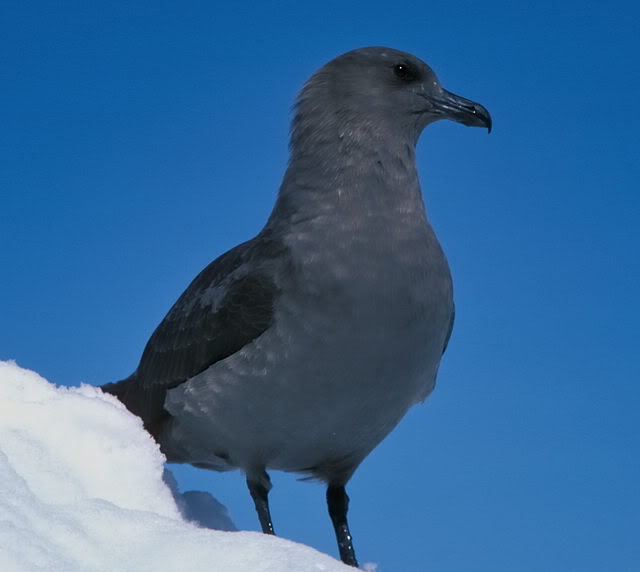
Dark Phase
Description
53 cm. It is a large, heavy, barrel-chested species, with broad, round wings and a short, broad tail. Typical all brown large Skua with white wing flashes. The South polar Skua is the greyest of the skua species, lacking the warm brown colouration often seen in other skuas. Best told by uniform, contrasting colouration of upperparts and underparts with golden nape feathering.
There are Light, Intermediate and Dark Phase morphs.
Light morph birds are pale smoky-grey to greyish-brown on the head and underparts, providing a distinctive and striking contrast between the dark bill, dark eyes, and the dark brown wings, back and tail. The pale hind neck sometimes extends into a pale saddle on the upper back, making the contrast between the body, wings and rear appear particularly stark. Some pale individuals also have a blaze of pale colouration on the face.
The dark morph is generally uniformly blackish-brown on the shoulder feathers and back, with golden hackles on the back of the neck. The head, wings and rest of the back are generally dark brownish-olive, appearing less two-tone than the pale morph. Dark morph skuas may also have a pale blaze on the face, and sometimes narrow, inconspicuous mantle streaks and a paler hind collar.
The juvenile is generally dark, with dark brown to dark grey plumage. The upperparts may have indistinct pale scaling. The bill of young birds is pale blue on the base and blackish above, and the legs and feet are pale
Distribution
Breeds on ice-free areas of Antarctica and adjacent islands, often in colonies along with other seabirds, in fact it is the only vertebrate known to have reached the South Pole. After breeding it disperses into the Atlantic, Pacific and Indian Oceans. It is a rare vagrant to southern Africa, recorded several times off the south-western coast and also sighted once near the coast of KwaZulu-Natal.
Habitat
Coastal margins and islands off Antarctica & Oceanic.
Movements and migrations
It leaves its breeding grounds in March, eventually returning in the period from September-November. Most southern African sightings are in Autumn, suggesting it sometimes passes through the region on the way to somewhere further north. The dark morph is most regularly recorded, which originates from Antarctic Peninsula.
Diet
The diet includes fish, krill, squid, carrion, crustaceans, molluscs and the eggs and chicks of seabirds. They will follow ships and forage on any jetsam. At sea will chase and harass smaller birds, forcing them to drop their prey or regurgitate, known as kleptoparasitism. Known as the "Raptor of the South".
Breeding
It breeds on relatively snow-free areas in Antarctica. A highly territorial bird, the South Polar Skua usually breeds from November to January, in loose colonies or isolated pairs. It is monogamous, with most pairs tending to breed in the same location for several years. The nests are shallow depressions on the ground may be on rocky outcrops, cliffs or valley floors, free from snow and ice. The clutch consists of 2 mottled eggs which are usually laid in November and December. Eggs which are incubated by both adults for around 30 days. The two eggs usually hatch a few days apart, with the first chick to hatch typically being larger and heavier than the second. The skua chicks leave the nest 1 or 2 days after hatching, although they do not fly until they are around 36 to 45 days old. In most cases, only one of the skua chicks will survive to fledging. This low breeding success is mainly due to ‘siblicide’.
Status
Rare passage migrant to offshore waters. The South Polar Skua is classified as Least Concern (LC) on the IUCN Red List.



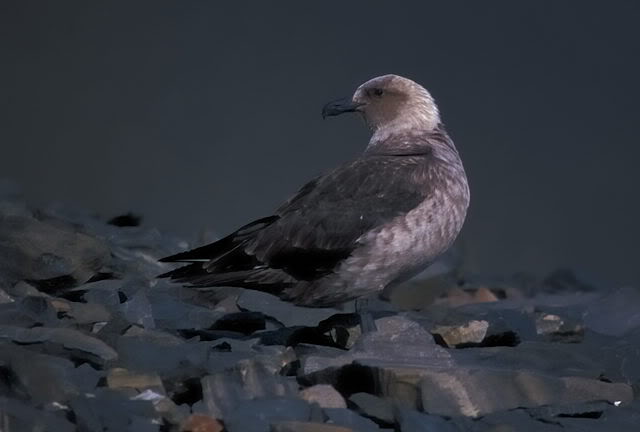
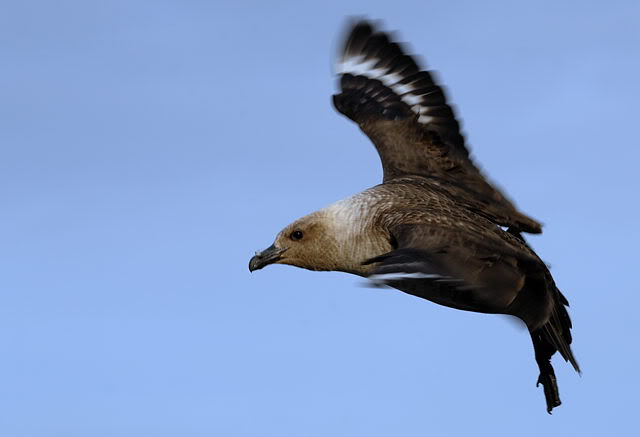

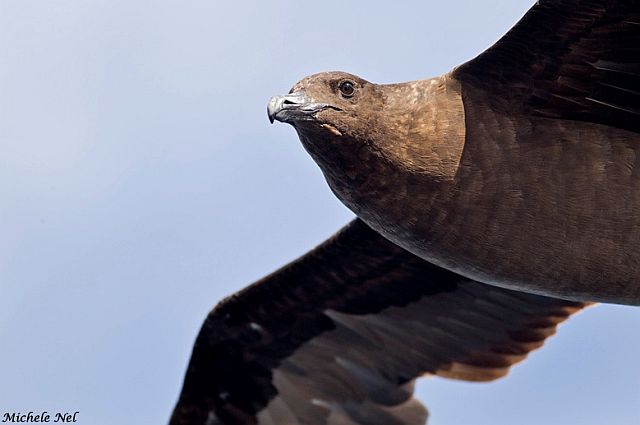 © Michele Nel
© Michele Nel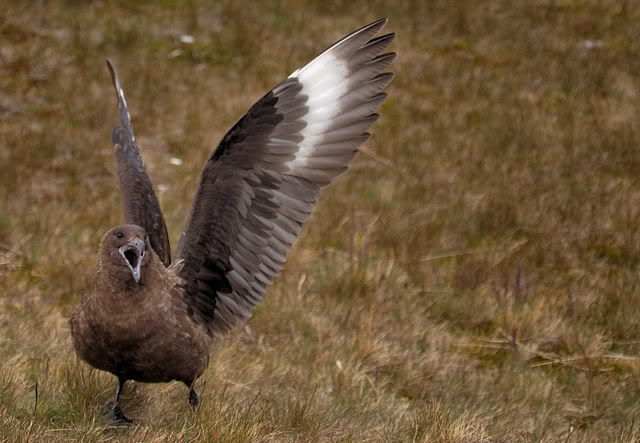
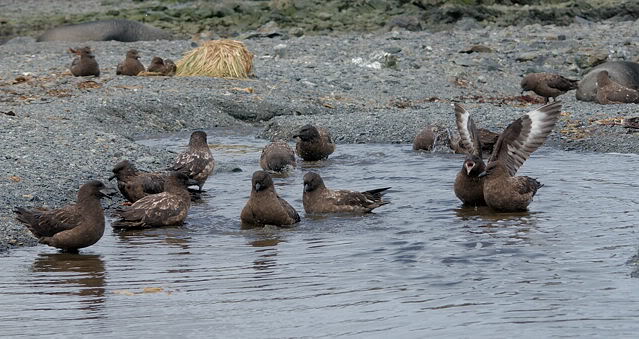
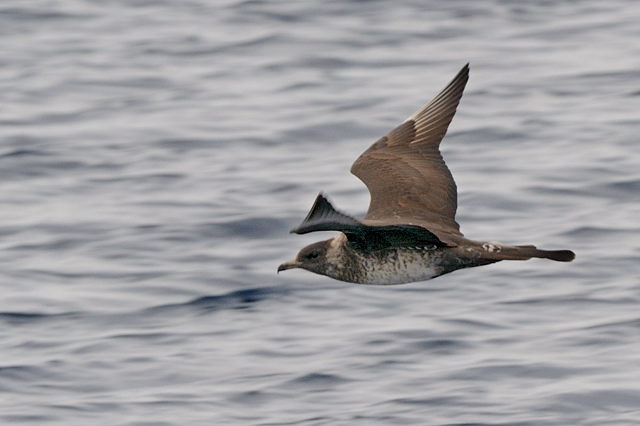



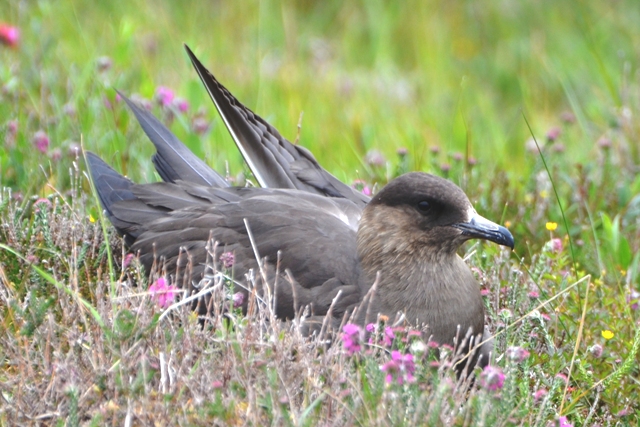

 © Dewi
© Dewi Breeding adult
Breeding adult